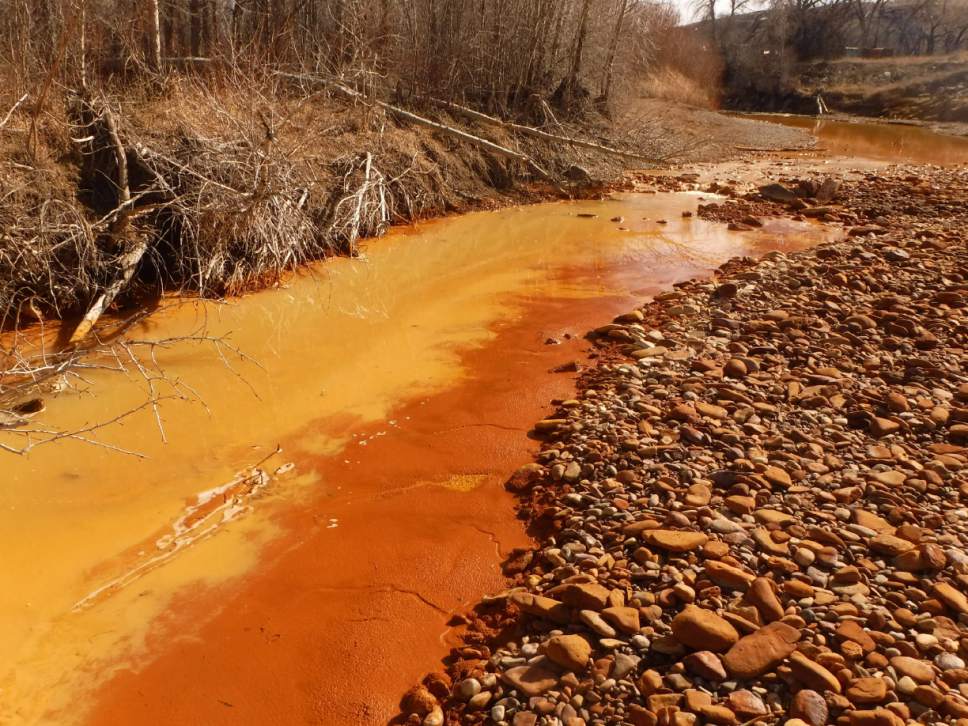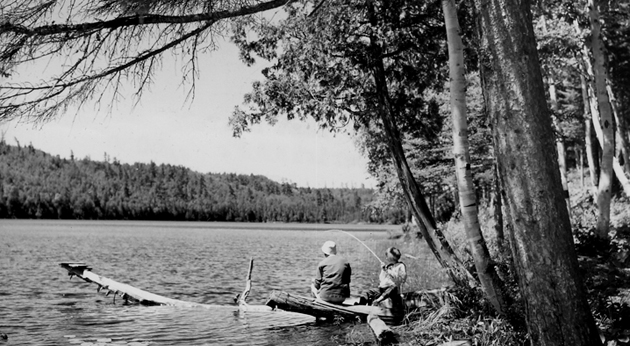Take Action!
Protect All of Minnesota’s Waters and Watersheds, Reject Toxic Sulfide Mining

Acid Mine Drainage (AMD) in Belt Creek, Montana - MDEQ
Northern Minnesota Federal Mineral Withdrawal EIS Scoping
Public "Listening Sessions" in Duluth, Saint Paul, Virginia - Minnesota
The USFS and BLM are holding public listening sessions within the comment period to gather public input on the proposed request for mineral withdrawal in the Rainy River watershed.
What: Northern Minnesota Federal Mineral Withdrawal EIS Public Scoping Meetings
LISTENING SESSION - Duluth
Thursday, March 16, 2017
Duluth Entertainment and Convention Center, 350 Harbor Drive
5:00 to 7:30 p.m.
LISTENING SESSION - SAINT PAUL
Tuesday, July 18, 2017
Saint Paul RiverCentre, Exhibit Hall A
5:00 - 7:30 p.m. (doors open at 4:30 p.m.)
LISTENING SESSION - VIRGINIA
Tuesday, July 25, 2017
Virginia High School, Auditorium
5:00 - 7:30 p.m. (doors open at 4:30 p.m.)
Proposed Northern Minnesota Federal Mineral Withdrawal:
The Forest Service requested a withdrawal of National Forest System lands, for a 20-year term, mainly within the Kawishiwi River (part of the Rainy River) watershed. According to the USFS, an EIS will be prepared to inform the Secretary of Interior's decision and in preparation for a Forest Plan Amendment. The scoping comment period has been extended 120 days to August 17, 2017.
Comments may be submitted via email to comments-eastern-superior@fs.fed.us
Project Location Summary:
The 234,328 acres of Federal land in this proposed request for withdrawal are located within the Rainy River watershed (primarily in the Kawishiwi River watershed) within the Superior National Forest and are adjacent to the southern edge of the Boundary Water Canoe Area Wilderness (BWCAW).
Northern Minnesota Federal Mineral Withdrawal EIS
The comment period will end on August 17, 2017.
More info found at the USFS site: https://www.fs.usda.gov/project/?project=50938
Comments may be submitted via email to: comments-eastern-superior@fs.fed.us
Some suggested comments:
To: U.S. Forest Service, Superior National Forest
Re: Northern Minnesota Federal Mineral Withdrawal
Protect All of Minnesota’s Waters and Watersheds, Reject Toxic Sulfide Mining
-The U.S. Forest Service has not adequately studied or addressed the cumulative impacts of mining exploration, proposed/potential sulfide mining, and continued expansion of taconite mine operations in the area bordering both the Boundary Waters and Lake Superior.
-The U.S. Forest Service must consider potential impacts to the headwaters of two internationally significant watersheds: the Rainy River and Lake Superior.
-The U.S. Forest Service needs to acknowledge the current impacts and environmental degradation from mining within Minnesota’s Arrowhead Region.
-The U.S. Forest Service needs to incorporate known science about Acid Mine Drainage (AMD) and toxic heavy metal contamination of both ground and surface water, and the historic record of such pollution and mine disasters in the U.S., Canada, and other countries, in its decision making process.
-The U.S. Forest Service needs to consider the fact that water treatment at sulfide mines will need to continue virtually forever (at least 500 years for the PolyMet Mine). Treated water will not be of the same character and high quality as the water that exists in this area right now. The Forest Service bears responsibility for maintaining this high quality water, and for future clean-up and liabilities. This includes any land where mining is allowed, on land that the Forest Service has transferred to multinational companies for the purpose of mining, and/or where retained portions of Superior National Forest are polluted by mining operations taking place on transferred lands.
-The U.S. Forest Service must honor its mission to hold lands in trust for the citizens of this nation: The mission of the Forest Service is "To sustain the health, diversity, and productivity of the Nation's forests and grasslands to meet the needs of present and future generations." Its motto is "Caring for the land and serving people."
The U.S. Forest Service could provide the best immediate benefit by denying the PolyMet land exchange. The permitting of PolyMet will facilitate a toxic sulfide mining district across the public lands of Minnesota’s Arrowhead Region—ultimately impacting both the Lake Superior and Rainy River watersheds.
The pollution of these waters for all future generations is unthinkable.In Summary:
I support the U.S. Forest Service taking action to protect all of Minnesota’s waters and watersheds.
The proposed federal mineral withdrawal is only part of what is necessary to protect Minnesota’s waters. The mineral withdrawal is a contradiction to the Forest Service’s precedent setting decision to approve the PolyMet land exchange and mine. The Forest Service's decision on PolyMet will allow the open pit sulfide mine to proceed on over 6,500 acres of currently protected Superior National Forest. Allowing the PolyMet land exchange and sulfide mine, will facilitate the opening of a toxic sulfide mining district across the Arrowhead Region.
Protect all of Minnesota’s waters and watersheds, reject toxic sulfide mining.
Name
Address
###
Superior National Forest Mineral Withdrawal Application Map
From the USFS EIS scoping documents, found here: https://www.fs.usda.gov/project/?project=50938
Superior National Forest Mineral Withdrawal Application Map: http://www.sosbluewaters.org/105871_FSPLT3_3924869.pdf
Superior National Forest Withdrawal Application: http://www.sosbluewaters.org/105871_FSPLT3_3924868.pdf
-- The Poisoning Of Our Waters Is Simply Not Acceptable --
The Arrowhead Region of Minnesota contains the triple watersheds, where waters flow north, east, and south, into the Rainy River, Lake Superior, and the Mississippi. The headwaters of this region are too valuable to put at risk from toxic sulfide mining schemes.
Superior National Forest - Minnesota's Arrowhead Country

East Bearskin Campground on Superior National Forest, Minnesota, July 1960
U.S. Forest Service History - The Weeks Act of 1911
March 1, 2011, marked the centennial of the Weeks Act — the "organic act" of the eastern national forests. Signed into law by President William Howard Taft, the Weeks Act permitted the federal government to purchase private land in order to protect the headwaters of rivers and watersheds in the eastern United States and called for fire protection efforts through federal, state, and private cooperation. It has been one of the most successful pieces of conservation legislation in U.S. history. To date, nearly 20 million acres of forestland have been protected by the Weeks Act, land that provides habitat for hundreds of plants and animals, recreation space for millions of visitors, and economic opportunities for countless local communities. As one historian has noted, "No single law has been more important in the return of the forests to the eastern United States" than the Weeks Act.
From the Forest History Society website:
http://www.foresthistory.org/ASPNET/Policy/WeeksAct/index.aspx
 For more recent news, updates, events, alerts and happenings, please join us on Facebook
For more recent news, updates, events, alerts and happenings, please join us on Facebook

